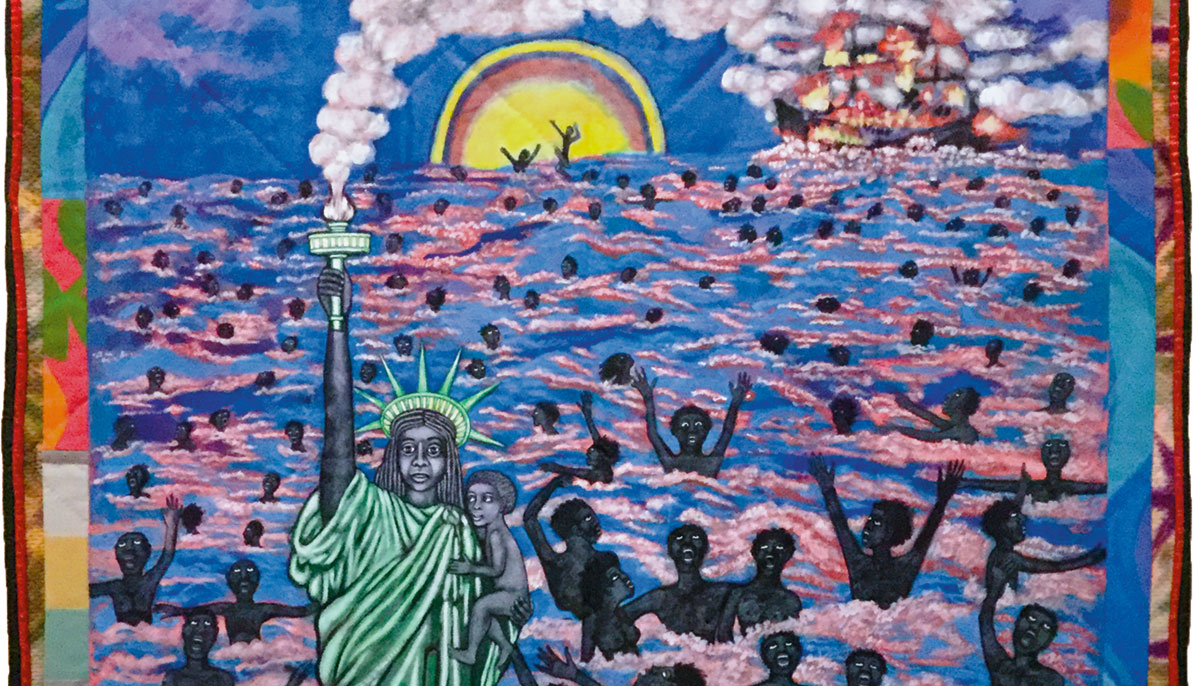It started before I was born. It began before you were born, too, this turning wheel of racialized consciousness. Its tracks are evident across the face of time and the threads of human connection.
Let us propose this is not an intractable condition but a legacy of human thought, speech, and physical behaviors. Our racialized consciousness and the suffering and confusion associated with it need not continue. This moment in our social history compels us to invite ourselves into a path of discoveries, learning, and practices to transform our karma.
I ponder the wheel, an ancient invention of great practicality. Its shape appears throughout human history in art, culture, science, and spiritual traditions. It has provided a powerful image and metaphor for the spiritual journey of humanity.
We must wake up.
In the Buddhist tradition, the wheel is a primary symbol of an eightfold path of healing and transformation leading to freedom. But the wheel also describes a repeating pattern of suffering called samsara, a Sanskrit word referring to the experience of wandering, trapped through endless cycles of suffering.

The diagram here is a map of the turning wheel of racial karma. The Sanskrit word karma and Pali term kamma, which gave rise to our modern-day word “karma,” literally mean action or doing. Any kind of intentional action, whether mental, verbal, or physical, is regarded as karma. Karma covers all that is included in the phrase “thought, word, and deed.”
This diagram of karma shows how intention affects phenomena in an interconnected cycle of manifestation, transmission, retribution, and continuation. If you are an imaginative learner, you can visualize how it relates to your lived experience.
Karma here means the living power of these three actions of thought, word, and deed to shape the quality of our individual and collective experience. In the Buddhist understanding, karma is not at all a fatalistic doctrine; the Buddha transformed it from the older meaning of cause and effect into a practical understanding of what it means to be conscious of your own intention.
The wheel of karma is set in motion by intention. This circle starts with what we intend and then manifests in our thinking, our speech, and our behavior.
While practicing being more conscious of setting my own intentions in life, I learned a scary thing: our brain is designed to use the least amount of energy necessary to get things done. I’m not just talking about brushing our teeth or driving a car or exercising. I’m talking about deeper things. Unless we make a conscious choice not to live on automatic pilot, most of us go through our days without thinking too deeply about the motivations that drive our actions.
Most of us know that changing habits is challenging. How much of what we do is habitual? Studies by neurobiologists and psychologists researching habit formation indicate that 40 to 95 percent of human behavior—how we think, how we respond with emotions, what we say, and how we act—falls into the habit category. So when it comes to deeply rooted thoughts and behaviors, however good we think our intentions may be, without insight about the need to change, the strong resolve to make it happen, and the corresponding action, a good 50 percent of the time we will default to habit.
The second station on this circle is manifestation. Whatever we intend gets manifested, whether we intend it consciously or unconsciously. Studies show that most of our behavior is unconscious. That’s scary to contemplate, but we must. When it comes to our habits around race, we must acknowledge and make what is unconscious conscious, so that we can set wise new intentions as individuals and as a collective. We must wake up.
The third station is transmission. The manifestation of our unconscious intention gets transmitted outward into the world through our actions and words, as well as inward through our thoughts and emotions. What we manifest, we transmit. We communicate what’s on our minds whether we want to or not. We communicate consciously and unconsciously, verbally and nonverbally.
Also, very importantly, we communicate through vibration. How did human beings communicate before language? We felt it. Have you ever walked into a room, and when you opened the door you knew, Boy, somebody was in here a minute ago, and they weren’t very happy? We have this sensitivity, if we haven’t let it be educated out of us, this sense of feeling what it is like to be in one another’s company. Our mirror neurons fire, building empathy and understanding. Neurologically and evolutionarily, we know we are capable of being together because we are designed to be social creatures.
The next station in this circle is retribution. Retribution doesn’t mean final judgment. Retribution means the here-and-now consequences of a previous action, because karma means “action.” Today’s adjective for someone who is aware of injustice is “woke”; the quality of being awake to suffering is what defines the Buddha, whose very name means “awakened.” If we aren’t awake, our retribution won’t come in the form of enlightenment.
The last stage after retribution is continuation. It’s a natural process. If you don’t intervene and don’t shift the wheel onto new pathways, the wheel of karma simply rolls on. This is true of the modern evolution of racialized consciousness. We see the same heartbreaking patterns repeating again and again: lynching in the deaths of Black people at the hands of the state, or slavery in the funneling of Black and Brown people into indentured labor in the prison industrial complex.
Karma reveals how our consciousness continues to turn—creating, propagating, cultivating, and systemizing racism worldwide. But every wheel has an axis that sustains its momentum, its movement forward, and its accumulated power. Like the characters in The Wizard of Oz, we are journeying with courage, clarity, and heart into the center of the axis, the secret space from which we can heal and transform the suffering of racialized consciousness.
Exercise: Opening the Working Ground of Race
This is a reflective exercise to understand how the energies of America’s racial karma are alive in your life story. Find a place where you may stop to reflect mindfully. You may speak, write, think, and meditate on these questions. If you write, keep your thoughts in a journal so you may read them again. What insights do you gain from going deeply into your storehouse of thoughts, feelings, and memories about race?
- What is the story of how your name came to be?
- When did you first notice differences in people’s looks?
- What stories about race and skin color did you hear growing up?
- What phrases do you use to describe racial differences?
- How is your body responding to this exercise?
- How is your body responding to these memories?
- What race seeds were planted as you look back over your life? Seeds meaning thoughts, words, actions, and events that remain with you, consciously and unconsciously.
- Which of these seeds were wholesome (leading away from racialized hate, greed, and delusion)?
- Which of these seeds were unwholesome (leading toward racialized hate, greed, and delusion)?
- Which seeds are most impactful in your life now?
- What is your priority in healing the racialized consciousness in yourself?
Excerpted from America’s Racial Karma: An Invitation to Heal © 2020 by Larry Ward, with permission from Parallax Press.

